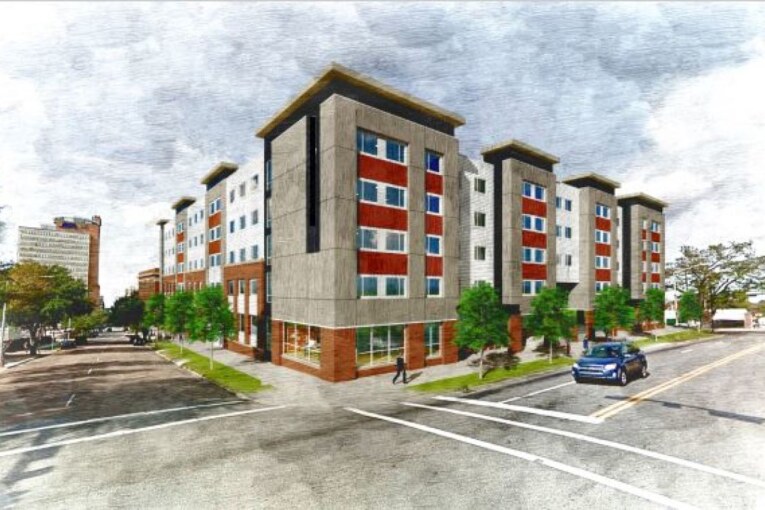
Introduction of Affordable Housing
- Demand for housing in India is literally going through the roof. To cater to the increasing demand.
- The growing concentration of people in urban areas has led to problems of land shortage, housing shortfall and congested transit and has also severely stressed the existing basic amenities such as water, power and open spaces of the towns and cities.
- Construction Industry account for one-sixth of the world’s fresh water withdrawals, one-quarter of its wood harvest.
- Urbanisation has resulted in people increasingly living in slums and squatter settlements and has deteriorated the housing conditions of the economically weaker sections of the society.
- According to estimates of the technical group constituted by the Ministry of Housing and Urban Poverty Alleviation (MHUPA), the the urban housing shortage in the country at the end of the 10th five-year plan was estimated to be 24.71 million for 66.30 million households.
- The group future estimated that 88% of this shortage pertains to houses for economically weaker sections (EWS) and another 11% for Lower-Income Groups (LIG). For middle and High-Income groups, the estimated shortage is only 0.04 million.
- There is no clear-cut definition of the term ‘affordable’, as it is a relative concept and could have several implied meanings in different contexts.
Concept of Affordable Hosuing
- It is said that it is a misconception that low cost housing is based on inferior specifications, low quality and produces sub standard work.
- It is said that it is a misconception that low cost housing is only for the poor.
Green Building
- Continued ability of a society, an ecosystem, or any such interactive system to function without exhausting key resources and without adversely affecting the Envirnoment.
Green Building Materials
- Reduced maintenance/replacement costs over the life of the building.
- Energy conservation and reduce harmful emissions.
- Improved occupant health and productivity.
- Lower costs associated with changing space configurations.
- Do not exhaust the existing supplies of finite materials.
Methods Adopted in Low Cost Housing
- Reduce the type and depth of foundation
- Reduce the wall thickness
- Reduce the plinth height
- Use of mud/soil stabilised blocks
- Use of some other materials- mud, thatch, stone, frameless doors, mud plaster, etc.
- Use of hollow cement concrete blocks
- Use of wood substitutes
- Use of pre cast slabs/jack arch roofing
- Use of single stack system, reduction of traps, low width shafts etc.
- Use precast lintels or brick arch lintels
- Use of locally available materials
How its made?
- These panels, originally developed by RBS Australia, were intended as wall panels suitable for rapid erection of walls in buildings to carry gravity loads.
- The panels are made of calcined gypsum plaster, combined with special additives and glass fibres, to produce GFRG panels- 12m long, 3m high and 124mm thick.
- The IITM reasearch group extended the application of this product for the entire building system- including floors, roofs, and staircases, thus significantly reducing the consumption of Reinforced Cement Concrete (RCC).
- The team also collaborated in th eindigenous development of an excellent water-proofing material, which is essectial for prolonged durability of the GFRG panels.
- Th panels are prefabricated and cut to dsigred sizes based on room dimensions with openings for doors and windows, thus making rapid construction possible.
- Filling the cavities with concrete increases the vertical load-carrying capacity almost tensold, and inserting vertical steel bars in these cavities, conributes to their earthquake resistance.
Why do we need low cost houses??
- Growing population day by day.
- Affordable housing for BPL people.
- We need a solution that is fast.
- Easy to build.
- Fulfills the needs of conventional houses.
- Our country aims that in our near future each and every individual has his/her shelter for his family and to fulfill this need we definitey need some immediate plans.
Issues in the Development of Affordable Housing
- Excessive control on Development of Land Creates Artificial Shortage.
- Lack of Marketable Land Parcels.
- Titling issues and lack of information.
- Rising thereshold costs of construction.
- Lack of access to home finance for low-income groups.
Factors to be considered for economic housing
- Use of locally available materials
- Make use of traditional methods
- Use of free natural resources
- Reduction in labour cost
- Reduction in time of construction
- Reduction in transport, handling and storage cost
- Reduction in wastage
- Reduction in maintenance cost
- Management of men, materials, machinary and money
Advantages
- Use of Heap & locally available mateirals.
- Job opportunity for local people.
- Biodegradable materials.
- Transferable technology.
- Import Reduction
- .Cost effectiveness.
- Minimum mortar required.
- Keys that interlock with each other provides better integrity.
- Hollow provisions for laying vertical and horizontal reinforcement to improve the lateral load resisting capacity.
- Ease and fastness in construction.
- Fire resistant.
Limitations
- Only for low rise structures: maximum 2 storey.
- Strength very much dependent on the properties of soil.
- Too much stabilization will make no economic sense.
- Interlocking features do not provide air tightness. Minimum gap is formed due to which termite/air current can pass.
- Requires minimum mortar between the blocks to maintain horizontal construction level.
- Too much mortar between the blocks jeopardizes the interlocking feature.
- For frame structures, HI-CSEB can be used as filler materials but the structural members sizes increases due to increase in the block weight weight.
Conclusion
- There is a strict need at present in India for building cheap and affordable houses.
- It is the key to nations development, to provide proper shelter to its citizens.
- The growing population in urban areas have led to a strict shortage in land, congested traffic and housing shortfall.
- This has also led to the hike in prices which makes it impossible for common people to have their own houses.
- Thus there is a immediate need for construction of cheap houses in large scale.
- Housing for the poor and the economically weaker sections of the society has been provided by the government under various welfare schemes.
- Low cost housing is considered housing constructed with low budget. The definition should have been the housing with minimum cost even if budget is available. Thus concept should then be valid for small or big, single or multistories and EWS or bungalow construction and all type of construction.
- This is insufficient compared to the existing shortage in the segment, ”says report on urbanization and housing shortage in India.
- The main reasons for rise in shortage in affordable housing on the supply side is lack of availablity or urban land, rising construction costs and regulatory issues while lack of access to home finance for low income groups are constraints on the demand side.


